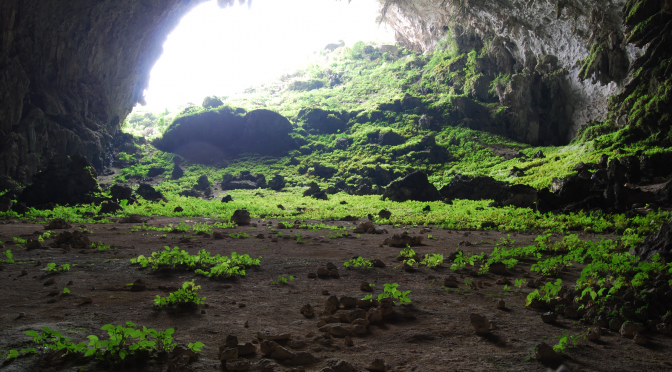Category: Ecosystems
-

Not By Trees Alone: It Takes An Underground Ecosystem To Clean Polluted Sites
Using advanced techniques for analyzing the simultaneous expression of genes from multiple organisms in an ecosystem, the scientists examined the roots of willows grown on a polluted site in suburban Montreal. They found that complex interactions among a range of ectomycorrhizal fungi — which form symbiotic sheaths around the roots of plants — and certain…
-

Tantalizing Beetle Fragrance Hastens The Destruction Of Invasive Shrub
By attaching small dollops of a waxy, putty-like substance containing the pheromone, the researchers found that they could more than double the number of tamarisk beetles congregating on the bushes, which often doubled the die-back of the plants as the beetles consumed the leaves and twigs. (Click on title for full story.)
-

Plants Manipulate Their Soil Microbiome For Their Own Benefit
By controlling the types of microbes that thrive around their roots, plants could be trying to protect themselves from less friendly pathogens while promoting other microbes that stimulate nutrient supply. (Click on title for full story.)
-

96 percent Of Central African Forests At Risk If Elephant Poaching Continues
These changes will occur because elephants are ecological engineers that help create and maintain forest habitat by dispersing seeds, recycling and spreading nutrients, and clearing understories, (Click on title for full story.)
-

Trees Show That Major Geological Changes Caused Amazon’s Great Biodiversity
The research has produced a biogeographical scenario that confirms in this context the significance of the geological history of north-western South America during the late Miocene and early Pliocene periods about 5 to 10 million years ago. “We have actually discovered that the diversification of these two plant genera took place in parallel with major…
-

It’s Complicated. Over-Hunting Of Tropical Animals Destroys Forests And Carbon Sequestration? Maybe.
But the long-term implications for biodiversity and the biomass of forests are not yet clear. And the expectation that without their dispersers, seeds of these plant species will land in the “kill zone” of insects and diseases under their parents and be replaced by other species that store less carbon, culminating in huge decreases in…
-

Newly Defined Plant Habitat Discovered In China’s Caves
We suggest that within SW China caves serve as both refuges and a valuable source of germplasm for the restoration of karst forest. We also propose that caves represent a distinct habitat for plants that is most similar to that of the forest understory, but distinct with respect to the absence of trees, leaf litter,…
-

Removing Even An Overlooked Tiny Insect From An Ecosystem Can Cause Serious Damage
A mutualistic relationship between species in an ecosystem allows for the ecosystem to thrive, but the lack of this relationship could lead to the collapse of the entire system. New research reveals that interactions between relatively small organisms are crucial to mutualistic relationships in an ecosystem dominated by much larger organisms, including trees and elephants.…
-

Absence Of Wild Rice Reveals Dangerous Toxins In Minnesota Waterways
“Wild rice serves as a flagship species or the equivalent of our ‘canary in a coal mine,’ giving us a warning on how human activity affects our water quality in Minnesota, The results of our studies are important because they show that increases in sulfate in our lakes and streams can have multiple negative consequences…
-

Simple Protection Of Urban Trees Has Huge Consequences For Storm water Management
Comparing the infiltration rate of street trees with and without guards in Manhattan’s Morningside Heights neighborhood, the researchers found that trees in protected pits absorbed water six times faster on average than tree pits without guards —3 millimeters versus .5 millimeters per minute. The researchers hypothesize that the guards improve infiltration by limiting soil compaction…
